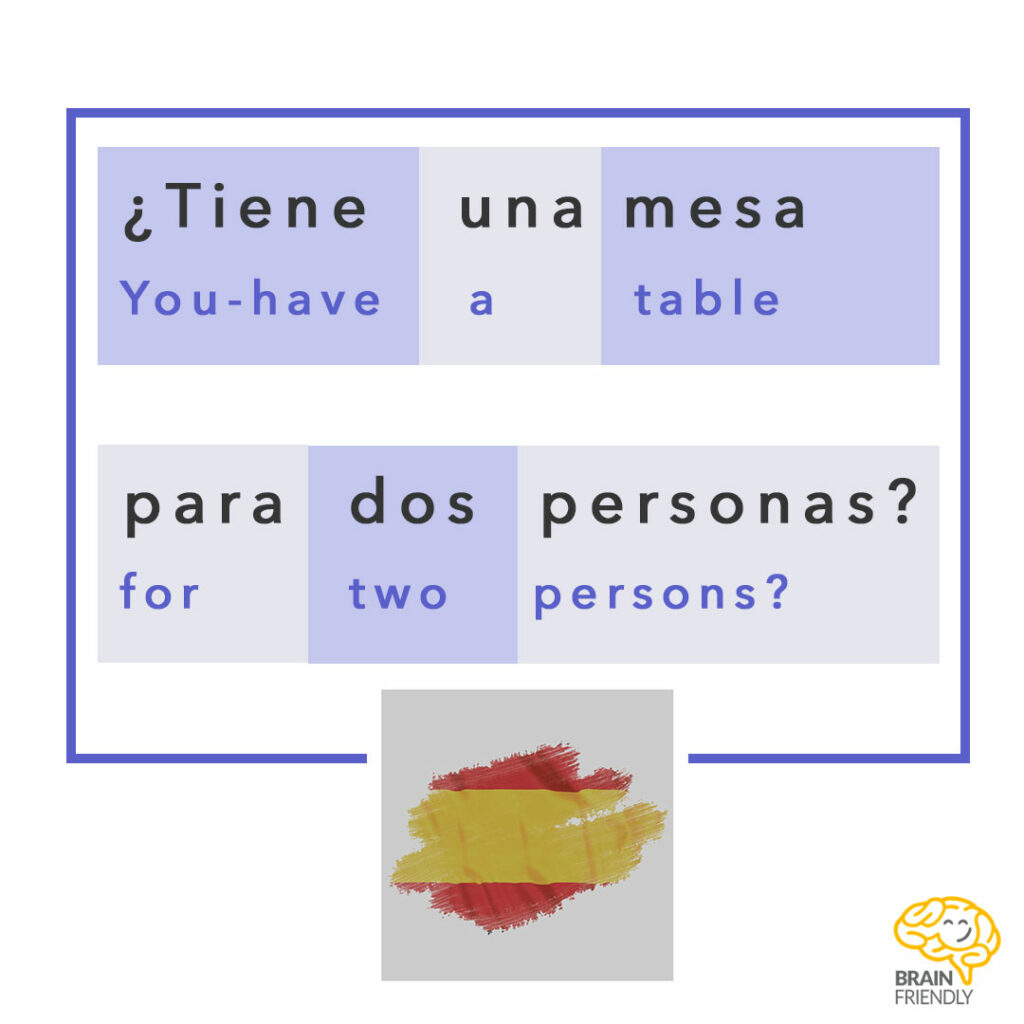We’ve often been told that you need the talent to learn languages. Either you have the language talent, or you don’t. But this view is long outdated.
We are told: “You can’t do it,” “You’d better do something else,” “You won’t make it to the A-levels”. At some point, we believe it ourselves and no longer trust ourselves. Most people fail because they don’t even try. They don’t believe in it.
Do you realize how much you are missing out on because you don’t dare? “I’m not so good at that,” “That’s not for me,” “I’m sure someone else can do it better.” Learning starts with having the confidence to accomplish something. This is how the brain adjusts to the upcoming task.
Overcome your inner weakness and believe in yourself. Don’t write it off just because it hasn’t worked so far, because maybe you just haven’t had the right strategy.
With the heart (and a little mind)
We undervalue emotions in our society. Yet, they have an enormous influence on our lives. They decide which life moments we remember forever and which are secondary. Therefore, positive and activating emotions must also be in the foreground during studying.
Cognitive processes in the brain influence learning – this has been known for a long time. However, in addition to these processes, the fact that emotional factors also influence the learning process has been confirmed in many empirical studies. For example, in a study by Craig, Graesser, Sullins, and Gholson [1], we could predict 27% of knowledge gain in learning complex subject matter by emotional experience during learning. The researchers examined the influence of various emotions on learning success: boredom and confusion reduce motivation and cause us to give up. According to the study, flow (rush of creation or activity, “everything is going very well right now”) tends to have a positive effect on learning success.
Positive and negative emotions
While anger or shame tends to cause people to put off learning more often, fear can even increase motivation. This is because people continually invest a great deal when they are worried about failing an exam. However, when the level of anxiety is high, it has a negative effect; people often give up or don’t take the test at all.
On the other hand, positive emotions are not always beneficial. For example, relaxation or relief often harms the learning process since one believes that one can easily manage everything anyway. However, activating positive emotions, such as fun or curiosity, increases creativity and problem-solving ability and motivates people to keep at it.
So what is the best way to learn? Complex content doesn’t have to be solvable on the first try, but it should be solvable. You should largely avoid harmful emotions and reinforce motivating emotions. A threat, punishment, and rushing are poor motivators. The best motivator is the prospect of reaching a state of happiness. You can create this happiness by rewarding yourself or by solving a problem independently.
Start with these two steps:
- A first important step is to reformulate thoughts that hinder learning: “With the right strategy, I will succeed,” “I can do this,” “I am well prepared for the exam, therefore nothing stands in the way of successfully passing.”
- find a learning strategy that suits you, is brain-friendly and fun.

Why is laughing important for the brain?
Because laughing displaces stress hormones, especially when it comes to learning, stress is often a hindrance. That’s why it’s important to relieve stress. Laughter is a simple and effective way to banish stress.
When was the last time you laughed heartily? Perhaps we should take children as an example from time to time. They laugh up to 400 times a day, while adults laugh only 15 times.
Just smile!
One way to create positive feelings is to smile – even if it makes you feel stupid because a smile has far more influence on you than you think. Forced smiles help, too. The positive facial expression alone causes your body to release happiness hormones, and your mood will improve.
Vera F. Birkenbihl (1946-2011) also confirms this method, as a management and motivation trainer: If you are angry and someone could make you laugh, you can “laugh away” the anger in just 10 seconds.
“Joy hormones eat up fight hormones.”
Vera F. Birkenbihl
However, if you don’t have anyone to make you laugh, you can trick your brain by “fake smiling” (pretending to laugh). If the corners of your mouth go up, the muscle presses on a nerve and communicates “joy” to your brain. However, according to Vera F. Birkenbihl, in this case, you’d better smile for 60 seconds instead of just 10. Whether you imagine joy or experience real joy is therefore unimportant. Both will influence you positively (also the immune system – not for nothing, they say “who smiles more, lives longer”). One minute of laughter is generally said to affect health as positively as 10 minutes of jogging or 45 minutes of meditation.
“You can either see everything badly or laugh for 60 seconds”.
Vera F. Birkenbihl
With the right strategy
Are there people with a bad memory? No, people’s brains always work the same way. The difference is the learning method we use.

How to make learning fun:
Learning is a simple, natural process that has made us who we are as a human species. Unfortunately, some of our species have complicated learning to the point that it has become a tedious burden. Yet, we once learned in a fun and casual way. As a child, we learned as we went along.
The Birkenbihl Approach for language learning draws on the natural processes in the brain. The brain derives rules automatically and loves to compare. To use the automatisms, the Birkenbihl Approach is mainly based on de-coding. This method is a word-for-word translation into the native language. A foreign language text is written down with large line spacing so that there is room for a second line for de-coding. Under each foreign word, write the translation into the native language. Translate word-for-word, but as far as possible in the context of the sentence (you conjugate/adapt verbs, etc.):

This method will help you intuitively learn the word meanings and usage in the sentence (grammar, form, culture of the language).
Brain-friendly.com has prepared, based on the Birkenbihl Approach, a study entertainment for unique fun. We used the de-coding in a comedy sitcom. Follow the movie and read the de-coding in the line below – quickly and with a lot of fun, you will understand the foreign language and learn to speak it perfectly yourself. Try it out! Have fun!
Conclusion
What and how strongly we feel can have a severe impact on learning performance. The good news is that learners can regulate emotions that hinder learning themselves. It can help to get into a cheerful mood before learning. In addition, you can specifically create feelings that are conducive to learning, for example, by selecting suitable learning content and learning methods.
[1] Craig, S., Graesser, A., Sullins, J. & Gholson, B. (2004). Affect and learning: An exploratory look into the role of affect in learning with AutoTutor. Learning, Media and Technology, 29, 241–250.
